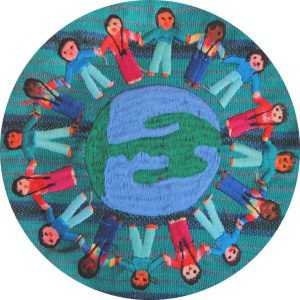The dark, hidden side of our technical communities
July 11, 2016
For a long time now, I’ve been wishing to write about the gender and diversity gap in the technical community. Today felt like that day, so here it is. It’s the longest post I have ever written, I think. Don’t worry, you don’t have to read it now. Save it for when you have some time to spare. No TL/DR here, I’m afraid.
As an active community member for some years now, I’ve been exposed to the rich ecosystem of user groups, formal and informal events, online collaboration, banter and gossip, articles, blog posts and other outlets of the technical community at large and SharePoint-specific community in particular. The personal rewards of interacting with other people in the community are enormous, and I feel grateful for the insights I got and for the opportunity to exchange points of view. Based on a voluntary participation, the community is one of the best examples of intrinsic motivation that I have ever seen.
However, the technical community isn’t the rose-painted picture nor it exists in the void. The real-world issues also seep into the technical community and not all what I have seen inside is something that I’d like to see again. I’ll try to explain it in the following lines.
The technical community is based mainly on the underlying politics of meritocracy. The more you work to benefit the community, the more benefit you get from doing it. We are used to think that our communities are as egalitarian and democratic as possible, but it’s a flawed illusion.
Who is the "community"?
Enter the blissful ignorance of conformity bias.
Let me check the circles of my personal interactions in the community. Mainly I’ve been involved in Spanish technical community around Microsoft technologies. I also have an active European participation, mainly in community-run events. In the end, I have participated in a couple of US and Canadian events, but my main field of action is Spain and Europe. I feel enriched by my community work, but let’s make a closer look.
Even in the Spanish community, I’ve been mostly involved with the people I know well, mainly the Spanish MVPs and user group leaders. We know each other as we always hang around the same events, and thus unintentionally we create a “inner circle” in the community that makes it difficult for new people to come inside. It’s not that there aren’t any new community members, but it’s more of a mental barrier of always having “the usual suspects”. I have heard several comments lately from bright technical people that don’t submit to events because “there are always the same guys” speaking there.
And there’s true to that. It’s true that in the Microsoft communities the preponderance of MVPs in the speaker rosters is something that makes it easier for the attendees to choose interesting events but it also shuts the door (or leaves it almost closed) for new people and new blood in the community. As MVPs we have to do community activities to keep our MVP status, and I think that it has this side-effect of erecting walls around the technical events for potential speakers that aren’t part of the “privileged” few.
Furthermore, my community interactions are mainly with the people similar to me: white males, with university studies, middle to upper-middle class. For years I’ve been blissfully ignorant of the biased world I was in, but for some time I’ve been growing a conscience that ultimately makes me write this post, due to several things in the last years. I’ll line them up for you, if you are still with me.

Vanessa Estorach is one of the founders of “Women in Mobile”, an advocacy group that helps raise the profile of women in the male-dominant world of mobile technology and marketing. She also happens to be my wife. She explains to me that one of the problems women face in the tech sector is that they have no role models. I haven’t thought about that before, but it’s painstakingly clear: while the boys have Bill Gates, Linus Torvalds or Mark Zuckerberg (nerd, geek stereotype included), the girls have no modern Ada Lovelace to refer to. I can only see some timid examples such as Marissa Meyer in Yahoo!. In fact, the stereotyped image of a tech person as a young nerd with zero social skills is the main factor that drives the girls out of technical careers even before stepping in.
I also read the “Lean In” book by Sheryl Sandberg, where Sheryl, a Facebook COO, paints a feminine/feminist view of a more egalitarian tech world and how to “lean in” to make it possible. My main takeaway from the book was there is a lot of effort to be done if we really want to see some change.
And last, but not the least, I’ve been subscribed to a newsletter called “Technically Speaking” for some time. It’s run by Chiu-Ki Chan and Cate Huston who write about technical speaking, a subject dear to my heard, but from the point of view of a minority, with special focus on codes of conduct and inclusive events. They are a female voice in a male-dominated sector, and collect positive examples of more diverse events and community. Their newsletters struck a chord in me and made me conscious of the “granted by default” privileges that I have as a white male, first-world technical community member.
The more I read and discussed about the “gender gap”, the more I felt that I could do more. I started to raise the issue at my work, in discussions with HR and management. I made a conscious choice of positive discrimination, recommending women over men from the candidates pool for our new hires. While positive discrimination is a discrimination, I think that it’s necessary until the field is leveled and the things regulate themselves. We have to apply extra effort to change the inertia that by itself will only perpetuate the existing situation, that’s why we have to discriminate positively.

However, the one thing that I try to avoid is to foster a token female presence. To have a single women in the team is almost as bad as having none. There is some research that says that starting with 3 women in the team is when you begin to see the effects of more diversity of opinion.
My community "girls club"
While my community circles are still mainly “boy clubs”, I have to acknowledge remarkable women in the community that I have the privilege of knowing personally:
- Cristina González, the MVP lead for Spain, Portugal, Italy (and some other countries). The envy of other MVPs who don’t have the privilege of having her as their lead, she has a soft and caring communication style and a brilliant mind that makes for very interesting conversations.
- Martina Grom, Office 365 MVP from Austria. For me she’s the embodiment of what I’d like to see more in the world: a competent professional, engaged in the community and true to her values about the women in the IT.
- Agnes Molnar, SharePoint MVP from Hungary. Agnes is a mother of three and a frequent community speaker and traveler. If that wasn’t enough, she even writes books and helps other women in the IT.
- Isabel Cabezas, Microsoft Technical Evangelist from Spain. Isabel is a former student of mine, that became coworker and now she participates in Microsoft Developer Experience team in Spain to communicate her passion about technology. Isabel also works to fix the gender gap by organizing events such as Ada Code Group or AdaJS/JSLadies.
- Iris Classon, Swedish MVP. Iris was a dietitian who discovered programming in 2011 and hasn’t been looking back since then. Her passion for technology is unbounded and she transmits it on her talks and her blog. While I still can’t make my mind about whether her previous look was a good or a bad role model for women in IT, she’s undeniably an example for other women in the programming community.
Beyond gender inequality
So, if we have more women in the technology, then the problem is solved, right? Well…there are still some issues beyond the mere presence of female talent in the community.
Do the women in the IT feel welcome in the community? The sexual harassment raises its ugly head even in our meritocratic communities. We won’t have more diverse communities without eradicating sexist jokes, patronizing talk and innuendo. There have been several high-profile incidents in the technical events lately, and we’re talking about supposedly more-than-average open and forward-looking communities.
What about the lactating mothers who want to come to an event? Will they feel welcome? And even for the parents regardless of the gender, what if they want to bring their children to the conference? How can we make it possible so that they won’t have to pay a babysitter?
And that’s only one of the diversity issues in our communities: the gender gap. But there are many more lurking around. How many times you had a speaker from emerging countries? By focusing ourselves on our cozy Western environment, we lose the valuable insights of the people whose experiences in the IT are radically different in scope and impact.
What about the economic inequality? As a members of the privileged middle-class, we tend to forget that not everyone can afford to travel to a conference to speak, even more so in the real community events where the budget is stretched. It’s a real barrier to more diverse events, and I can feel it even in Spain where outside Barcelona and Madrid, few speakers can show up because of the economic downturn that hit the areas outside the metropolis much harder. How many voices we lose due to the companies that can’t (or won’t) pay the travel costs for their people?
What about the people with disabilities? Can they participate in the technical community as it is now? Or do we need to change the community itself. Even such a small detail as the wheelchair ramp or the subtitles for people with hearing problems can mean that a person who wants to participate cannot do so.
What about the LGBT people in the technical world? Do they feel welcome when somebody cracks a joke or uses a derogatory term even without thinking about it. There is a sincere post on Medium by a black lesbian programmer and her experiences about the diversity in the tech industry.
I have just scratched the surface of the unconscious bias that we have in our technical communities. You can find a lot, lot more information just by searching on Internet. For example, the Python community has a set of guiding principles for a more inclusive community.

What can I do about it?
So, what can I personally do to foster the more diverse community? As a user group leader and a technical speaker I do have some freedom of action and I intend to do something to increase the diversity:
- I will make our user group events (such as SharePoint Saturday Barcelona) more inclusive by inviting speakers outside our “white, privileged boys club” and by helping that everyone who wants to participate can do so, regardless of the gender, sex, sexual preferences, economic situation or physical condition
- I will promote the awareness of the diversity gap in the technical community and be vocal about it
- I will decline to participate in the events where there’s no effort to bring more diverse backgrounds or where there’s no clear code of conduct (such as this one for instance)
I know that I won’t change the world, as I realized many years ago I can’t change it by myself. What I can do, however, is change what I do. By “being the change you want to see in the world” I can stay coherent with my beliefs and help bring in a richer, more diverse world to the communities I’m involved with.